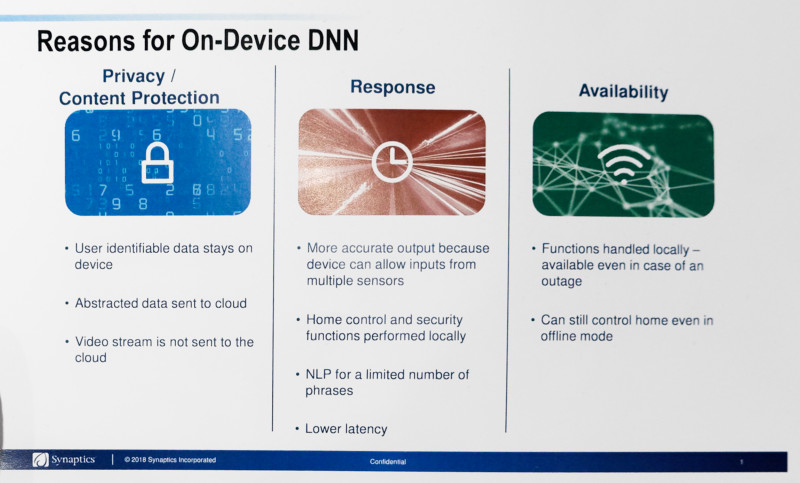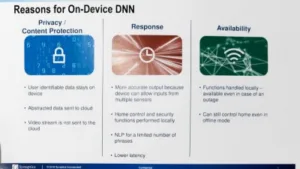Meeting only several times a year, it can be hard to keep up with Synaptics which started out with touch pads and then bought the display driver business from Renesas. That meant more display and touch integration. Then in July, the company bought Conexant Systems, which has audio and voice software for smart homes. It also acquired Marvell Technology’s Multimedia Solutions unit. At IBC, it was the ex-Marvell group that we met with and they said that the company is now focused around ‘enabling intelligence at the edge’. In particular, Synaptics was promoting Android-based STBs that use the SoCs that it inherited with Marvell.
We talked about the efficiency of voice and the company told us that Comcast has found that users get around a 90% accurate hit rate when using voice to find content. It also explained that the industry is keen to move from having voice in the remote control to using far field microphones. The volume of smart speaker sales is increasing and that is reducing the cost of far field microphones. Remote controls also get lost and from the maker’s point of view, adding Bluetooth audio costs quite a lot to the remote. Synaptics is focusing its attention to getting the best out of the Google Assistant on the Android platform.
One of the things you can do if you are ‘at the edge’ is that you don’t have to track different streams of content, you can look at the final images. For example, the availability not only of CPUs and GPUs, but also neural net engines means that you can start to do things like detecting logos in content, so that you know what the consumer is viewing even if it is coming OTT. That means that you can tailor content offerings or advertising to the user.
Working at the edge also means that you can meet privacy concerns by not sending user data back to the cloud as well as providing lower latency and allowing the control of local devices.


